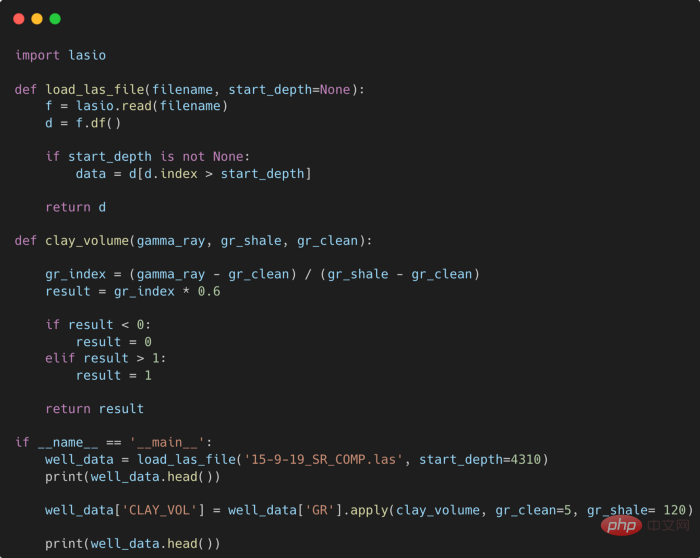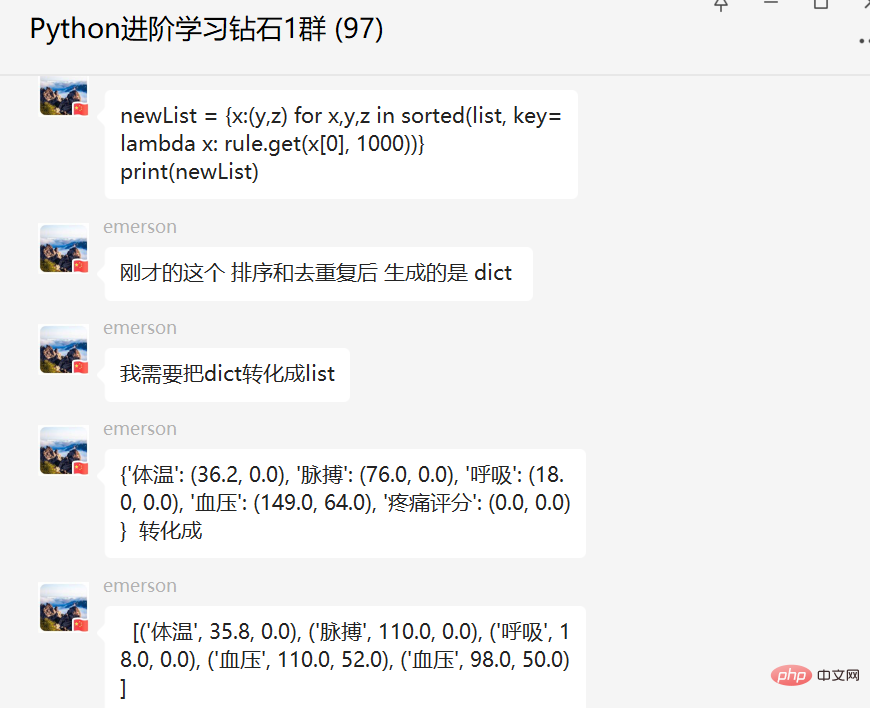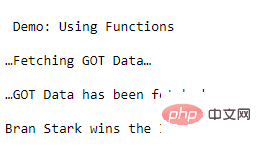Yorgo Sun 2002/01/22
php程序写的时间长了,自然对他所提供的功能了如指掌,他所提供的一大堆功能,真是觉得很好用,但有时候会发现php也缺少一些功能,自己总是会产生为php添加一些自定义的功能的想法。久而久之,终于今天憋不住了,开始动手研究如何添加。
下载一个php的源代码包,这里使用的是php 4.0.5版,解压后会看到php的根目录下会有README.EXT_SKEL这样一个文件,打开详细阅读了一下,发现了一个非常好用的工具,这个工具可以帮你构建一个空的php扩展,然后你向里面添加相应的代码就可以完成你自己的功能扩展了。下面我们就来介绍如何使用这个工具。
首先转移你的目录到php的目录下的ext目录,如果你只需要一个基本的扩展框架的话,执行下面的命令:
./ext_skel --extname=module_name
module_name是你自己可以选择的扩展模块的名字,例如我选择的my_module。执行工具后会自动在ext目录下建立你选择的module_name名字的目录,里面已经生成了相关的代码,这些代码中只需要调整config.m4文件中的三行注释就可以正常的编译带这个自定义扩展模块的php了。在php的根目录执行下列操作就可以得到。
./buildconf
./configure --enable-module_name
make
下面我来演示建立my_module扩展框架的全过程,为了更有效果,我们来完成一个php的扩展功能,在php中调用这个功能可以在web页面中显示hello world这个经典单词。
在php目录下的ext目录中,执行下面的命令
./ext_skel --extname=my_module
得到反馈结果:
Creating directory my_module
Creating basic files: config.m4 Makefile.in .cvsignore my_module.c php_my_module.h tests/001.phpt my_module.php [done].
To use your new extension, you will have to execute the following steps:
1. $ cd ..
2. $ vi ext/my_module/config.m4
3. $ ./buildconf
4. $ ./configure --[with|enable]-my_module
5. $ make
6. $ ./php -f ext/my_module/my_module.php
7. $ vi ext/my_module/my_module.c
8. $ make
Repeat steps 3-6 until you are satisfied with ext/my_module/config.m4 and
step 6 confirms that your module is compiled into PHP. Then, start writing
code and repeat the last two steps as often as necessary.
如果你能看懂上面的东西,那就照着去做。如果不是太明白的话,按照我下面的提示来做也可以。
Cd my_module
首先进入my_module目录
vi config.m4
使用文本编辑器打开config.m4文件,文件内容大致如下:
dnl $Id$
dnl config.m4 for extension my_module
dnl don't forget to call PHP_EXTENSION(my_module)
dnl Comments in this file start with the string 'dnl'.
dnl Remove where necessary. This file will not work
dnl without editing.
dnl If your extension references something external, use with:
dnl PHP_ARG_WITH(my_module, for my_module support,
dnl Make sure that the comment is aligned:
dnl [ --with-my_module Include my_module support])
dnl Otherwise use enable:
dnl PHP_ARG_ENABLE(my_module, whether to enable my_module support,
dnl Make sure that the comment is aligned:
dnl [ --enable-my_module Enable my_module support])
if test "$PHP_MY_MODULE" != "no"; then
dnl If you will not be testing anything external, like existence of
dnl headers, libraries or functions in them, just uncomment the
dnl following line and you are ready to go.
dnl Write more examples of tests here...
PHP_EXTENSION(my_module, $ext_shared)
Fi
根据你自己的选择将
dnl PHP_ARG_WITH(my_module, for my_module support,
dnl Make sure that the comment is aligned:
dnl [ --with-my_module Include my_module support])
修改成
PHP_ARG_WITH(my_module, for my_module support,
Make sure that the comment is aligned:
[ --with-my_module Include my_module support])
或者将
dnl PHP_ARG_ENABLE(my_module, whether to enable my_module support,
dnl Make sure that the comment is aligned:
dnl [ --enable-my_module Enable my_module support])
修改成
PHP_ARG_ENABLE(my_module, whether to enable my_module support,
Make sure that the comment is aligned:
[ --enable-my_module Enable my_module support])
一般我会选择后者,然后保存退出。如果你对vi文本编辑器的操作有困难的话,请参考相应的说明文章,这里就不再详细描述了。
Vi my_module.c
将文件其中的下列代码进行修改
/* Every user visible function must have an entry in my_module_functions[].
*/
function_entry my_module_functions[] = {
PHP_FE(say_hello, NULL) /* ß添加着一行代码 */
PHP_FE(confirm_my_module_compiled, NULL) /* For testing, remove later. */
{NULL, NULL, NULL} /* Must be the last line in my_module_functions[] */
};
在文件的最后添加下列代码
PHP_FUNCTION(say_hello)
{
zend_printf("hello world\n");
}
保存文件退出
vi php_my_module.h
在文件中PHP_FUNCTION(confirm_my_module_compiled);一行前面添加下面的代码
PHP_FUNCTION(say_hello);
保存文件退出
退回到php的根目录下,执行下面的命令
./buildconf
./configure --enable-my_module
make
如果一切顺利的话,我们现在已经将扩展模块my_module编译到php里面了。我们编写下面的代码进行测试
Say_hello();
?>
保存文件为say_hello.php
在php的根目录下运行
./php –q say_hello.php
正常情况下会显示
hello world
表示我们的第一个扩展正常的运行了!
解释一下上面做的操作,ext_skel生成一些框下文件,我们需要修改以下文件
my_module.c 扩展模块的主程序
php_my_module.h 扩展模块的头文件
config.m4 配置文件
主程序中描述了php扩展模块的声明,模块中含有多少个函数,各个函数的作用,在phpinfo函数中显示什么内容,模块初始化做些什么,结束做些什么都会在这个文件里进行描述。我们在上面只是添加了一个函数say_hello,并且描述了say_hello函数的具体内容,调用zend_printf系统函数在php中打印字符串。
在对应的头文件中声明了say_hello这个函数,从而完成了我们预期的功能。下面我们会编写一个更复杂的扩展,创造一个带参数的php扩展函数,根据给入的参数,显示hello world, xxxx。Xxxx代表输入的字符串内容,例如我的名字yorgo。
Vi my_module.c
修改最后的say_hello函数内容如下:
PHP_FUNCTION(say_hello)
{
zval **yourname;
if (ZEND_NUM_ARGS() != 1 || zend_get_parameters_ex(1, &yourname) == FAILURE)
{
WRONG_PARAM_COUNT;
}
zend_printf("hello world, %s\n", Z_STRVAL_PP(yourname));
}
存盘退出。
退回php的根目录,运行
make
修改say_hello.php为
Say_hello(“yorgo”);
?>
保存退出后运行
./php –q say_hello.php
得出结果
hello world, yorgo
表示我们这次的修改也成功了,可以改变say_hello中的参数,看看动态的效果。
这里主要解释上面修改的函数内容,由于say_hello函数需要有参数引入,所以在my_module.c中的say_hello函数主要在进行参数的处理,将php中引用say_hello时所填写的参数内容正确的传递到my_module.c中的say_hello处理函数中。为此,程序中添加了这么几行。
zval **yourname;
if (ZEND_NUM_ARGS() != 1 || zend_get_parameters_ex(1, &yourname) == FAILURE)
{
WRONG_PARAM_COUNT;
}
zend_printf("hello world, %s\n", Z_STRVAL_PP(yourname));
代码解释如下:
zval **yourname;
初始化一个参数的指针
ZEND_NUM_ARGS()
得到传递过来得参数数量,并且判断如果不为1的时候表示有问题,报错。
zend_get_parameters_ex(1, &yourname)
将刚刚初始化的指针指向传递过来的参数,如果不成功则报错。
Z_STRVAL_PP(yourname)
处理指针指向的参数并获得实际存储的值。
(待续)
欢迎网上转载,但请保留作者的版权声明,如需线下刊登、发表请与作者联系yorgo@163.net http://www.ruisoft.
 提高 Python 代码可读性的五个基本技巧Apr 12, 2023 pm 08:58 PM
提高 Python 代码可读性的五个基本技巧Apr 12, 2023 pm 08:58 PMPython 中有许多方法可以帮助我们理解代码的内部工作原理,良好的编程习惯,可以使我们的工作事半功倍!例如,我们最终可能会得到看起来很像下图中的代码。虽然不是最糟糕的,但是,我们需要扩展一些事情,例如:load_las_file 函数中的 f 和 d 代表什么?为什么我们要在 clay 函数中检查结果?这些函数需要什么类型?Floats? DataFrames?在本文中,我们将着重讨论如何通过文档、提示输入和正确的变量名称来提高应用程序/脚本的可读性的五个基本技巧。1. Comments我们可
 CRPS:贝叶斯机器学习模型的评分函数Apr 12, 2023 am 11:07 AM
CRPS:贝叶斯机器学习模型的评分函数Apr 12, 2023 am 11:07 AM连续分级概率评分(Continuous Ranked Probability Score, CRPS)或“连续概率排位分数”是一个函数或统计量,可以将分布预测与真实值进行比较。机器学习工作流程的一个重要部分是模型评估。这个过程本身可以被认为是常识:将数据分成训练集和测试集,在训练集上训练模型,并使用评分函数评估其在测试集上的性能。评分函数(或度量)是将真实值及其预测映射到一个单一且可比较的值 [1]。例如,对于连续预测可以使用 RMSE、MAE、MAPE 或 R 平方等评分函数。如果预测不是逐点
 详解JavaScript函数如何实现可变参数?(总结分享)Aug 04, 2022 pm 02:35 PM
详解JavaScript函数如何实现可变参数?(总结分享)Aug 04, 2022 pm 02:35 PMjs是弱类型语言,不能像C#那样使用param关键字来声明形参是一个可变参数。那么js中,如何实现这种可变参数呢?下面本篇文章就来聊聊JavaScript函数可变参数的实现方法,希望对大家有所帮助!
 盘点Python内置函数sorted()高级用法实战May 13, 2023 am 10:34 AM
盘点Python内置函数sorted()高级用法实战May 13, 2023 am 10:34 AM一、前言前几天在Python钻石交流群有个叫【emerson】的粉丝问了一个Python排序的问题,这里拿出来给大家分享下,一起学习下。其实这里【瑜亮老师】、【布达佩斯的永恒】等人讲了很多,只不过对于基础不太好的小伙伴们来说,还是有点难的。不过在实际应用中内置函数sorted()用的还是蛮多的,这里也单独拿出来讲一下,希望下次再有小伙伴遇到的时候,可以不慌。二、基础用法内置函数sorted()可以用来做排序,基础的用法很简单,看个例子,如下所示。lst=[3,28,18,29,2,5,88
 学Python,还不知道main函数吗Apr 12, 2023 pm 02:58 PM
学Python,还不知道main函数吗Apr 12, 2023 pm 02:58 PMPython 中的 main 函数充当程序的执行点,在 Python 编程中定义 main 函数是启动程序执行的必要条件,不过它仅在程序直接运行时才执行,而在作为模块导入时不会执行。要了解有关 Python main 函数的更多信息,我们将从如下几点逐步学习:什么是 Python 函数Python 中 main 函数的功能是什么一个基本的 Python main() 是怎样的Python 执行模式Let’s get started什么是 Python 函数相信很多小伙伴对函数都不陌生了,函数是可
 Python面向对象里常见的内置成员介绍Apr 12, 2023 am 09:10 AM
Python面向对象里常见的内置成员介绍Apr 12, 2023 am 09:10 AM好嘞,今天我们继续剖析下Python里的类。[[441842]]先前我们定义类的时候,使用到了构造函数,在Python里的构造函数书写比较特殊,他是一个特殊的函数__init__,其实在类里,除了构造函数还有很多其他格式为__XXX__的函数,另外也有一些__xx__的属性。下面我们一一说下:构造函数Python里所有类的构造函数都是__init__,其中根据我们的需求,构造函数又分为有参构造函数和无惨构造函数。如果当前没有定义构造函数,那么系统会自动生成一个无参空的构造函数。例如:在有继承关系
 go语言的形参占用内存吗Dec 28, 2022 pm 05:19 PM
go语言的形参占用内存吗Dec 28, 2022 pm 05:19 PM形参变量在未出现函数调用时并不占用内存,只在调用时才占用,调用结束后将释放内存。形参全称“形式参数”,是函数定义时使用的参数;但函数定义时参数是没有任实际何数据的,因而在函数被调用前没有为形参分配内存,其作用是说明自变量的类型和形态以及在过程中的作用。
 Python编程:有关函数返回值以及最佳实践基本指导原则Apr 10, 2023 am 11:31 AM
Python编程:有关函数返回值以及最佳实践基本指导原则Apr 10, 2023 am 11:31 AM本篇内容作为以函数为主题的最后一篇,来介绍一下函数返回值以及编写函数的一些基本的最佳实践指导原则。函数输出:返回值函数的返回值是Python领先于竞争对手的东西之一。在大多数其他语言中,函数通常只允许返回一个对象,但是在Python中,你可以返回一个元组——这意味着可以返回任何你想要的东西。这个特性允许程序员编写用其他语言编写的软件要困难得多,或者肯定会更加乏味。我们已经说过,要从函数返回一些东西,我们需要使用return语句,后面跟着我们想要返回的东西。函数体中可以根据需要有多个返回语句。另一


Hot AI Tools

Undresser.AI Undress
AI-powered app for creating realistic nude photos

AI Clothes Remover
Online AI tool for removing clothes from photos.

Undress AI Tool
Undress images for free

Clothoff.io
AI clothes remover

AI Hentai Generator
Generate AI Hentai for free.

Hot Article

Hot Tools

Atom editor mac version download
The most popular open source editor

VSCode Windows 64-bit Download
A free and powerful IDE editor launched by Microsoft

MinGW - Minimalist GNU for Windows
This project is in the process of being migrated to osdn.net/projects/mingw, you can continue to follow us there. MinGW: A native Windows port of the GNU Compiler Collection (GCC), freely distributable import libraries and header files for building native Windows applications; includes extensions to the MSVC runtime to support C99 functionality. All MinGW software can run on 64-bit Windows platforms.

SublimeText3 Linux new version
SublimeText3 Linux latest version

mPDF
mPDF is a PHP library that can generate PDF files from UTF-8 encoded HTML. The original author, Ian Back, wrote mPDF to output PDF files "on the fly" from his website and handle different languages. It is slower than original scripts like HTML2FPDF and produces larger files when using Unicode fonts, but supports CSS styles etc. and has a lot of enhancements. Supports almost all languages, including RTL (Arabic and Hebrew) and CJK (Chinese, Japanese and Korean). Supports nested block-level elements (such as P, DIV),






